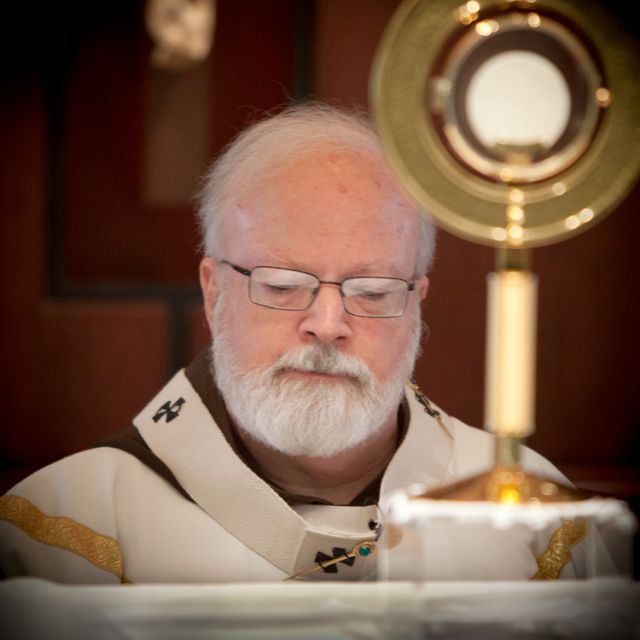The numbers are staggering, if one tries to quantify the scale of the human damage from the past to be repaired. Boston’s pastoral outreach office has met with more than 1,000 victims and family members. In the past seven years, the archdiocese has spent $7 million on counselling and medical services for victims, and provides ongoing assistance for some 300 people. Approximately 800 claims of sexual abuse have been settled by the archdiocese.
On the prevention and safety front, some 300,000 children have received safe environment training in parishes and schools, and 175,000 adults engaged in archdiocesan programs have been trained to identify and report suspected abuse. Since the safety programs began, 575 reports of child abuse or neglect have been made to the authorities, almost all of them arising from a child disclosing abuse by a family member, friend or other adult known to the child.
So the sexual abuse crisis is very much an ongoing matter of urgent concern in Boston. Yet in another sense the crisis is not what it was in 2002. The prevailing situation is much different today. The vast majority of cases were from the 1960s, ’70s and ’80s.
And Cardinal Sean — as a Capuchin friar he still uses his simple Franciscan habit and his first name — while expressing gratitude to the media for exposing what needed to be exposed, gently suggests that simply replaying the storyline of 2002 is to paint a false picture.
“If the impression is created that the abuse is current or recent, Catholics and the general public are lead to view priests with suspicion and presume that Church environments are not as safe as the facts indicate they are,” Cardinal Sean wrote.
In the past 10 years, Cardinal Sean notes, there has been one case of clergy sexual abuse in the archdiocese of Boston.
Boston has had a tough decade. Soon after the sexual abuse crisis, a parish reorganization resulted in many parishes closing with all the attendant pain and suffering. And the archdiocese was is in a “financial freefall,” as Cardinal Sean told the National Catholic Reporter. There was a $15-million annual operating deficit, and a debt of $35 million owed to the Knights of Columbus. Both the lay and clergy pension funds were failing. The Catholic hospitals were losing $40 million annually.
Today, in a remarkable show of resilience and generosity, the archdiocese has paid its debts and operates in the black.
Perhaps the best news is about St. John’s Seminary, which in 2002 looked like it might be headed for closure. It now has more than 100 seminarians, 70 of them studying for Boston. Ten years ago Boston had fewer than 20 seminarians.
Cardinal Sean also addressed the sexual abuse crisis in a personal and spiritual way, not just as a matter of better policies. He has spent hundreds upon hundreds of hours with sexual abuse victims — in Boston, in his previous diocese of Fall River, and in Ireland, where he was appointed a special Vatican visitor. He has led moving liturgies of healing and reconciliation with and for victims, with dramatic gestures of contrition and service — prostrations of the clergy, the washing of the feet of victims. He led an archdiocesan novena that went to the most afflicted parishes to pray for healing, for reconciliation and for conversion.
Cardinal Sean was given one of the toughest assignments in the Church. He has not been without critics, as some mistakes were inevitable given the scale of what he confronted in Boston. But 10 years later, a remarkable work of grace has been accomplished in a local Church that many thought might never recover.
“(All the suffering) makes me more certain of God’s mercy,” Cardinal Sean told the National Catholic Reporter in the anniversary interview. “The more we experience evil, there’s a greater capacity to experience good. What it has done, I think, is to help me to focus on things that are more essential. When you’re in contact with so much pain and suffering, it does help you to put things in perspective.... I think it does stretch your heart.”
‘Remarkable work of grace’ in Boston, 10 years on
By Fr. Raymond J. de SouzaIs it over? Yes and no. It was 10 years ago this month that the sexual abuse crisis exploded in the archdiocese of Boston, with reverberations across the world.
Cardinal Sean O’Malley, sent to Boston in 2003 as archbishop to right the reeling ship, has written at length on the 10th anniversary. He is quick to argue that the sexual abuse crisis is not over. It’s not over principally because sexual abuse is not something a victim simply gets over. It’s also not over because the process of purification and penance is a path the Church cannot abandon.
Please support The Catholic Register
Unlike many media companies, The Catholic Register has never charged readers for access to the news and information on our website. We want to keep our award-winning journalism as widely available as possible. But we need your help.
For more than 125 years, The Register has been a trusted source of faith-based journalism. By making even a small donation you help ensure our future as an important voice in the Catholic Church. If you support the mission of Catholic journalism, please donate today. Thank you.
DONATE

